Mastering Self-Infusion: Hints and tips to help you beat infusion confusion
Why is it important be able to self-infuse?






Learning to self-infuse and self-treat is a very important part of growing up with haemophilia.
Learning to manage your condition and self-treat means you can become a lot more independent much earlier than most of your other friends.
To start with it may seem really difficult to self-infuse but it’s nothing you can’t handle. Just look at how many people with haemophilia out there do it themselves. They were in the same boat as you once upon a time!
So while you might have some difficulties at the start ‘practice makes perfect’ and eventually self-infusing just becomes second nature.


Why do we need to take factor?
Haemophilia is a rare blood disorder where a person’s liver doesn’t produce enough clotting factor and so they are more prone to internal bleeds in to their muscles and joints.
For most people, treating haemophilia means putting the missing factor back into the bloodstream via an intravenous (into the vein) infusion.
"Regular infusions to prevent bleeds is called prophylaxis. Factor can also be given on demand when a person with haemophilia experiences a bleed as a result of a sports injury or an accident. By learning to self-treat and keeping on track with your prophylaxis you can reduce the chances of this happening!"
Whether you are just starting to learn how to self-infuse, have already started learning, or are a seasoned pro these pages offer an overview of some of the steps involved in successfully self-infusing.
They include some hints and tips we’ve heard from people with haemophilia who have mastered self-infusion.
Preparing for your infusion
When it comes to self-infusing, preparation is really important!

Before handling your factor and kit, make sure you wash your hands properly and that the surface you are using is also clean!
"Then decide which vein you are going to infuse. Rather than just using one vein every time, try to use a few different veins for your infusions, so each has time to heal. Using the same vein over and over again means it has more chance of wearing out, which means you might not be able to use it again. But of course, we all find our favourite ... and that’s a good reason to look after it!"

You can use numbing cream on the infusion site… if you do, it is best to apply the cream at least 30 minutes before infusing!

“Did you know that once you have injected a few times in the same place, you don’t feel nearly as much pain as when you started. This is because you get used to the sensation of the needle and the skin in the area gets desensitized”
Make sure you clean the injection site with an alcohol wipe or spray and give it time to air dry, as the wet alcohol can cause stinging when you insert the needle


Before starting your infusion, make sure you have all the things you‘ll need. You may not use them all, but it is better to be prepared!
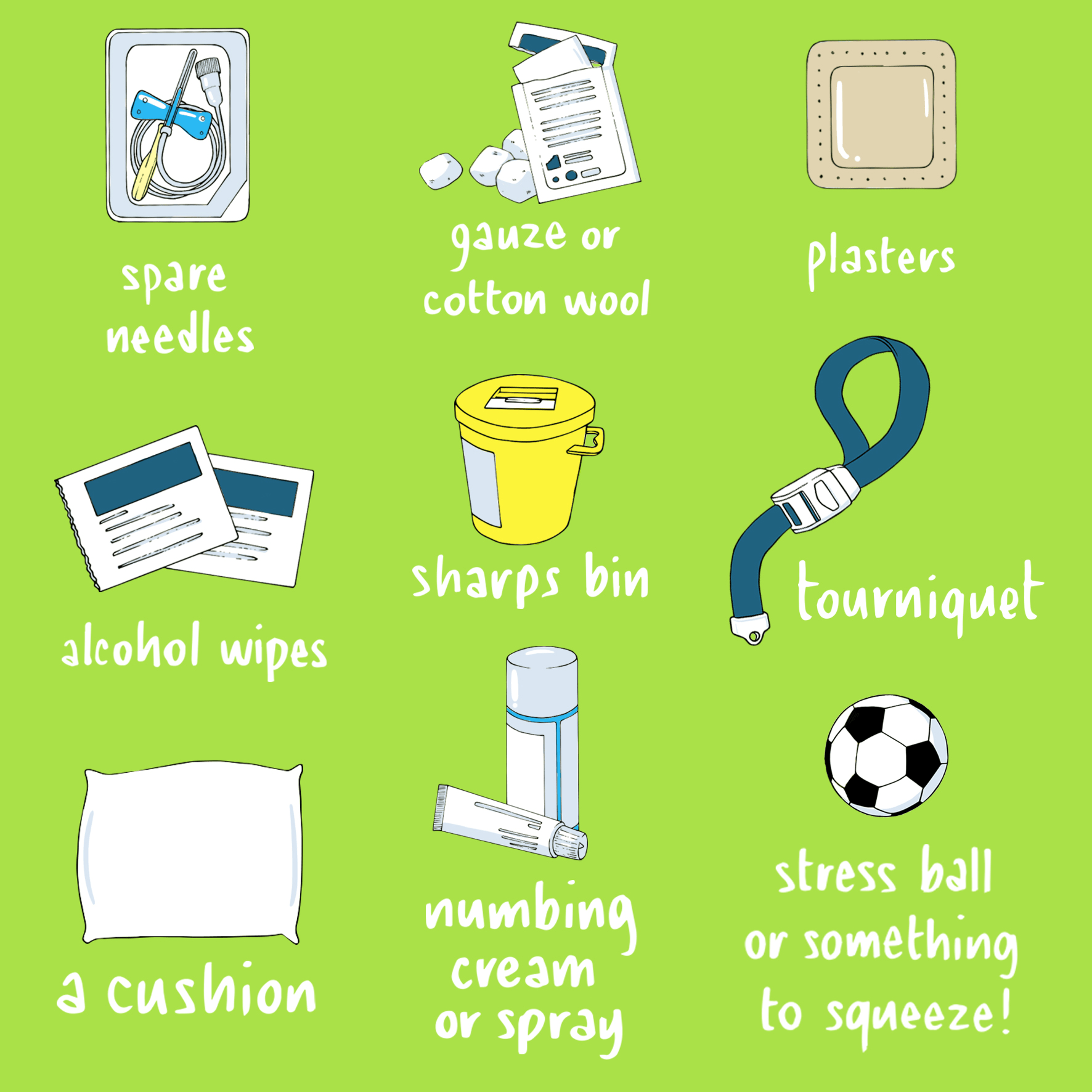
Make sure you’re using the right sized butterfly needle for your veins! The different colours represent the thickness (gauge) of the needle. It‘s always best to use the smallest size needle as this preserves veins for lifetime use.
Mixing your factor
There are number of different factor products out there with slightly different mixing kits… but, they all essentially mix in the same way. It is about making sure the factor (white powder) fullly dissolves in the liquid supplied in the pre-filled syringe

- Pop off the cap from your factor vial and then use an alcohol wipe to swab the top of the vial
- Insert the transfer device (filter needle- remove) into the factor vial
- Screw the plunger into the pre-filled syringe, Break off the perforated cap on pre-filled syringe
- Insert the syringe into the top of the transfer device and press the plunger down until all the diluent is transferred into the factor vial
- Allow the factor to fully dissolve in the diluent there shouldn’t be any large particles or lumps of powder visible – you can help the factor dissolve by gently swirling the factor vial!

Priming the needle
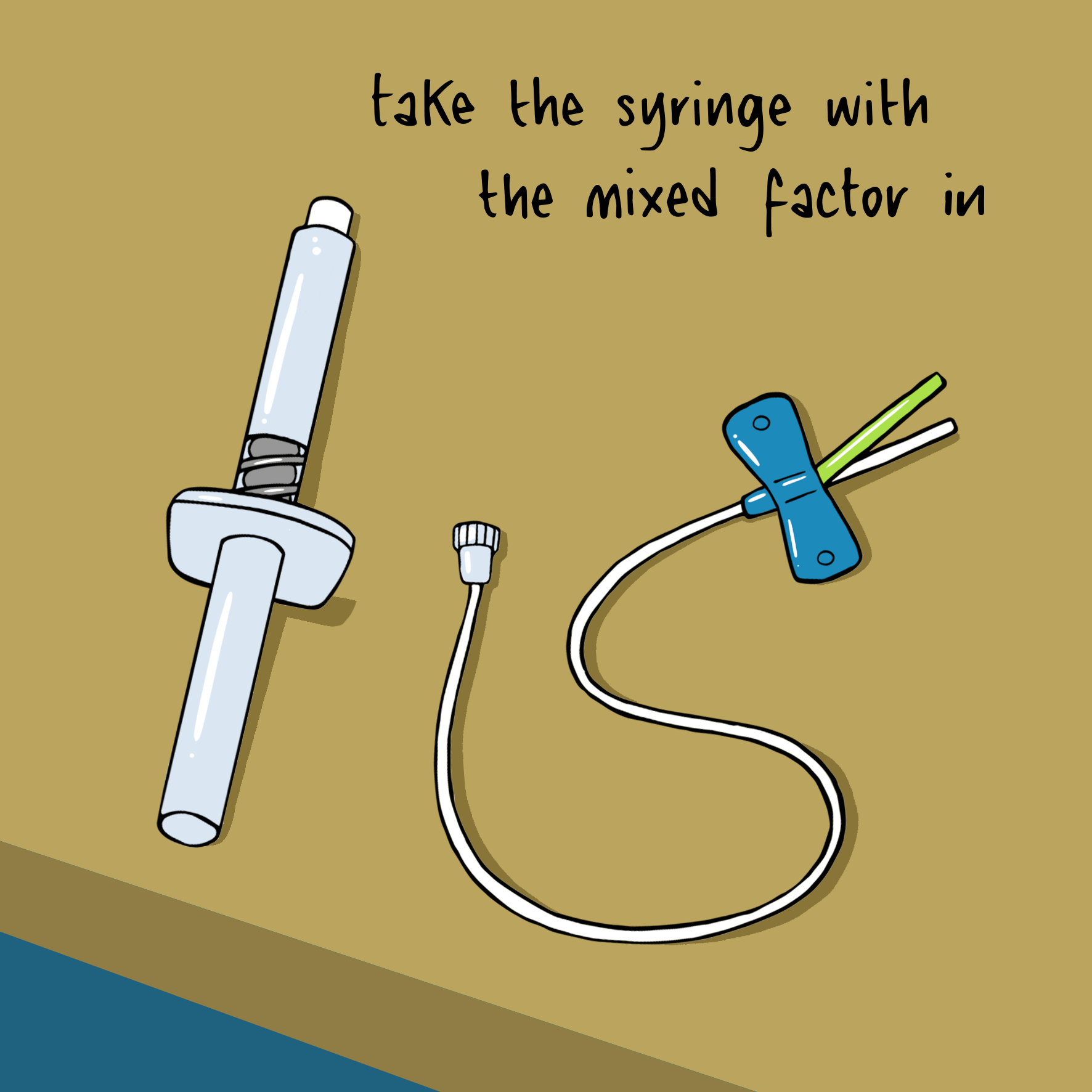
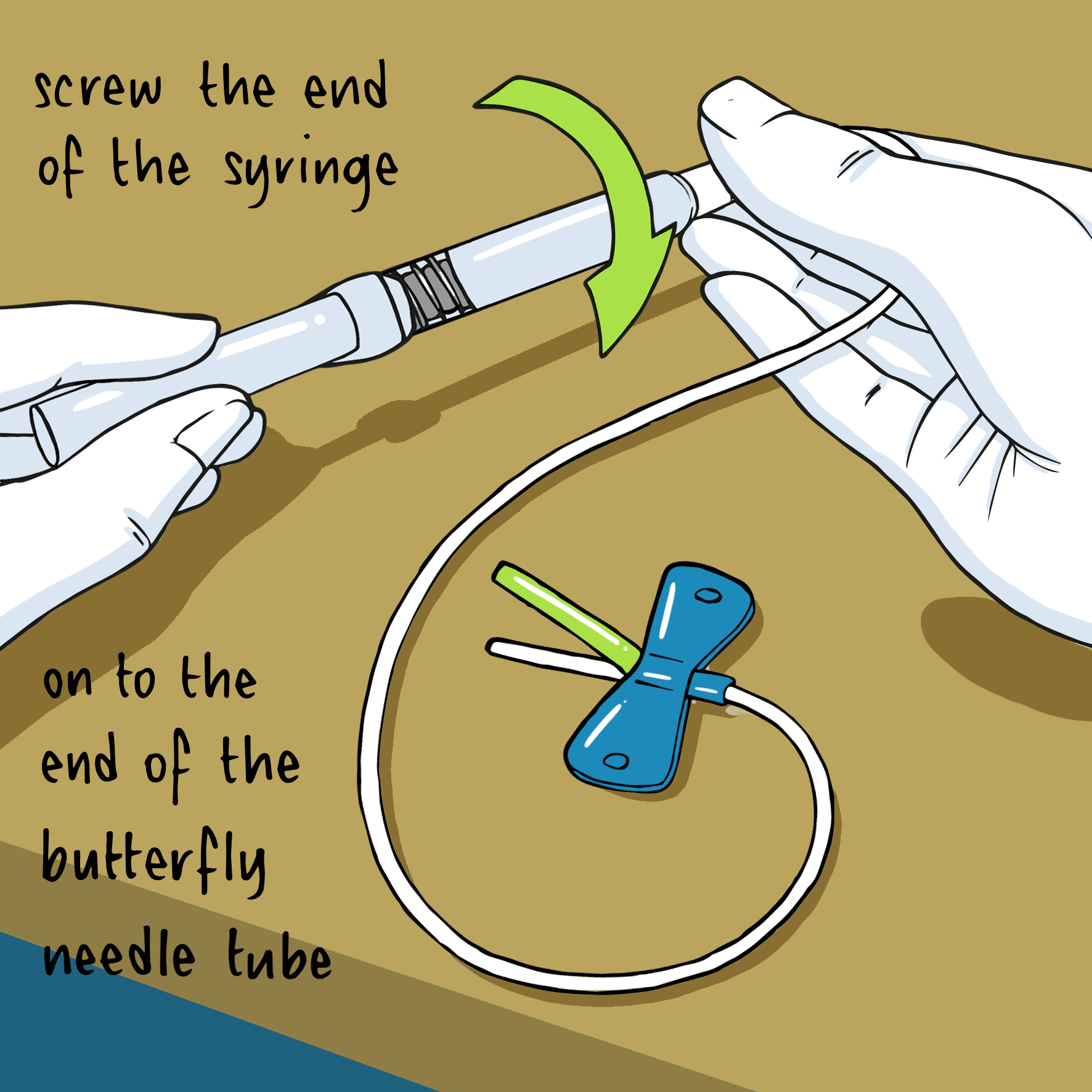
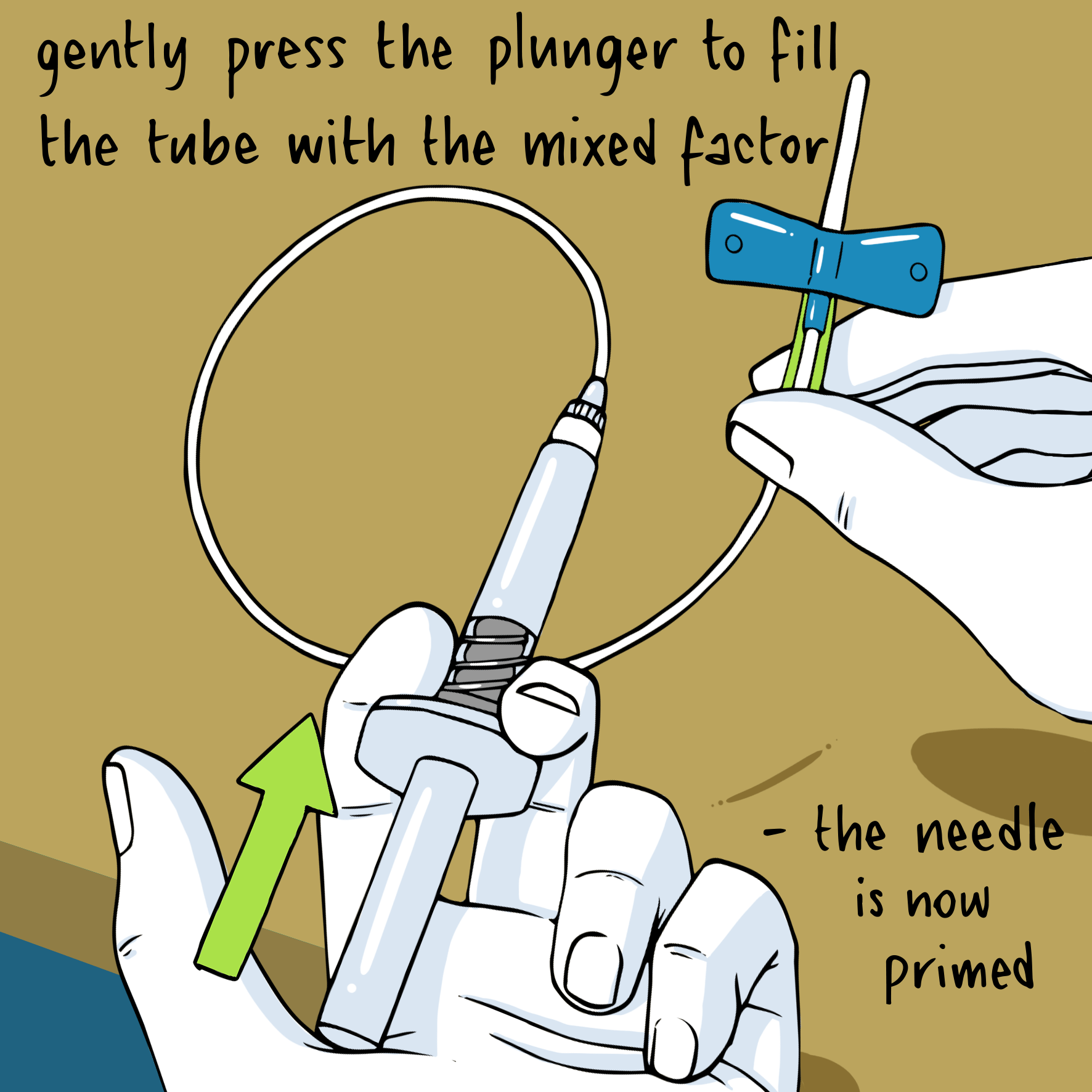
Finding the vein you're going to use
For many people, the trickiest part of the whole self-infusion process is finding and successfully inserting into a vein … it may feel tricky when you first start out but over time it becomes second nature, as you become more familiar with your own veins and the way they behave!

There can be a number of things that make it difficult to find your vein and nobody wants to have to put the needle in themselves more than they have to, so it’s important to take your time, stay relaxed and prepare yourself to insert the butterfly needle.
A tourniquet is an extremely useful bit of kit to get your veins to the surface, easy to feel and in the best condition to infuse. They come in a variety of different types so be sure to ask your centre about them, give them a try and see which one you are most comfortable using.


Being cold will mean your veins won’t be as easy to access – do something to warm yourself up! Try wearing an extra layer or fleece, put your arm or hand under warm water, warm pack/cloth on the injection site (clean site after), quick jog, jumping jacks, squidgy ball, anything to get your heart pumping and your blood flowing!
If you are stressed or anxious, this can also make it harder to find a vein! Injecting yourself with a needle isn’t a nice experience, but it helps to keep calm, take your time and take deep breaths if you find yourself getting a bit nervous. Remember, the needle going in the vein only takes a second, and the small amount of pain is over very quickly.
Keep hydrated! – if you are dehydrated it will be harder to find a vein – ensure you have had plenty to drink a little before you are planning to infuse.

Remember, it isn’t just about seeing the vein.. it’s more important to be able to feel the vein! Not all veins will be really visible and near the surface, but if you can feel the vein, it’s easier to insert the butterfly needle. Some people find that squeezing a stress ball helps.

Try a practice run to make sure you can feel a vein and release the tourniquet easily.
Use your tourniquet to get the vein to the surface, take time to feel the vein and the direction it's going in, and have a few practice runs before you are ready to actually insert the needle.
You can practice the motion of gliding the butterfly needle in while keeping the protective sheath on the needle.
Just make sure to give your arm a break and loosen the tourniquet when you need! You can always tighten it back up.
Action! - putting the needle in
So you can mix the factor like a pro in a world record worthy time. But how to get it into your vein with the butterfly and inject the factor?
Once you have the vein you are going for, feel free to give it another feel, It's important to figure out the direction of the vein with your finger and begin to think about how you will put the needle in.
There is no need to rush this stage! Take your time, focus, make sure the vein is ready and insert the needle when you are comfortable.
You need to enter the vein with the needle at an approximately 45 degree angle, so you are almost gliding the needle in. Then, level it off, like a plane coming into land. This way you don’t end up going through the other side of the vein.

Push the needle into the vein smoothly and fairly quickly; not really fast as you want to make sure you get the needle in the vein but don’t push the needle in too slowly as this can make the quick stinging pain last longer – once the needle is in there isn’t much pain at all, if any.
“If you continue to feel pain in the area you’ve put the needle in whilst you are injecting your factor, check to make sure the needle is still in the vein, by gently pulling back on the syringe plunger so see if any blood flows back into the butterfly tube… if it doesn’t the needle may no longer be in the vein and you may be "tissuing” where the factor just gets trapped under the skin rather than going in to the bloodstream. This can cause some discomfort.“
When you get the vein blood should flow back in to the butterfly tube – you can gently pull on the syringe plunger to check this too!
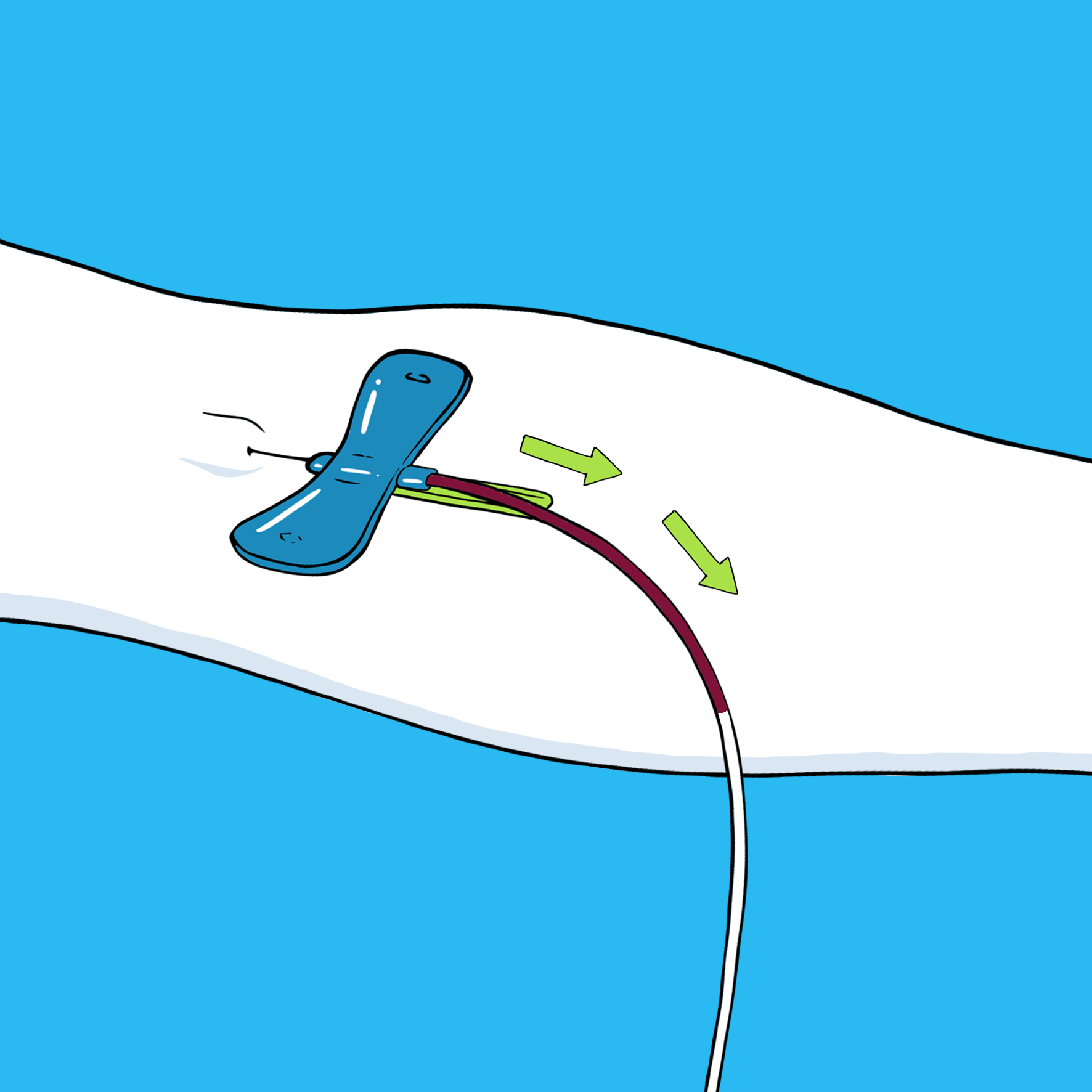

Some people attach the syringe to the needle before they inject and squirt the factor to the end of the butterfly needle. The line is primed, removing air and this keeps the system closed to help prevent infection.
“When priming the butterfly with factor do it slowly as the tubing is very thin and its easy to squirt out lots of factor and waste some of it by accident“
Some people may attach the syringe after putting the needle in, which some people find tricky using only one hand. If you attach the syringe after you need to pull the blood back right in to the syringe to remove air from the system, but don’t pull back too much blood as it may clot in the syringe.
Injecting the factor
Once you are confident you are in the vein, release the tourniquet and you can begin to infuse your factor by gently pressing down the syringe plunger.
If you want to check the needle is still in the vein whilst you are infusing, you can gently pull back on the plunger and check if blood flows back in to the butterfly tube – if it does, you’re still in, so continue with infusing your factor."
Removing the needle
Once you have infused all your factor you are ready to remove the needle.
Have cotton wool or gauze ready and hold it over the area where the needle is.
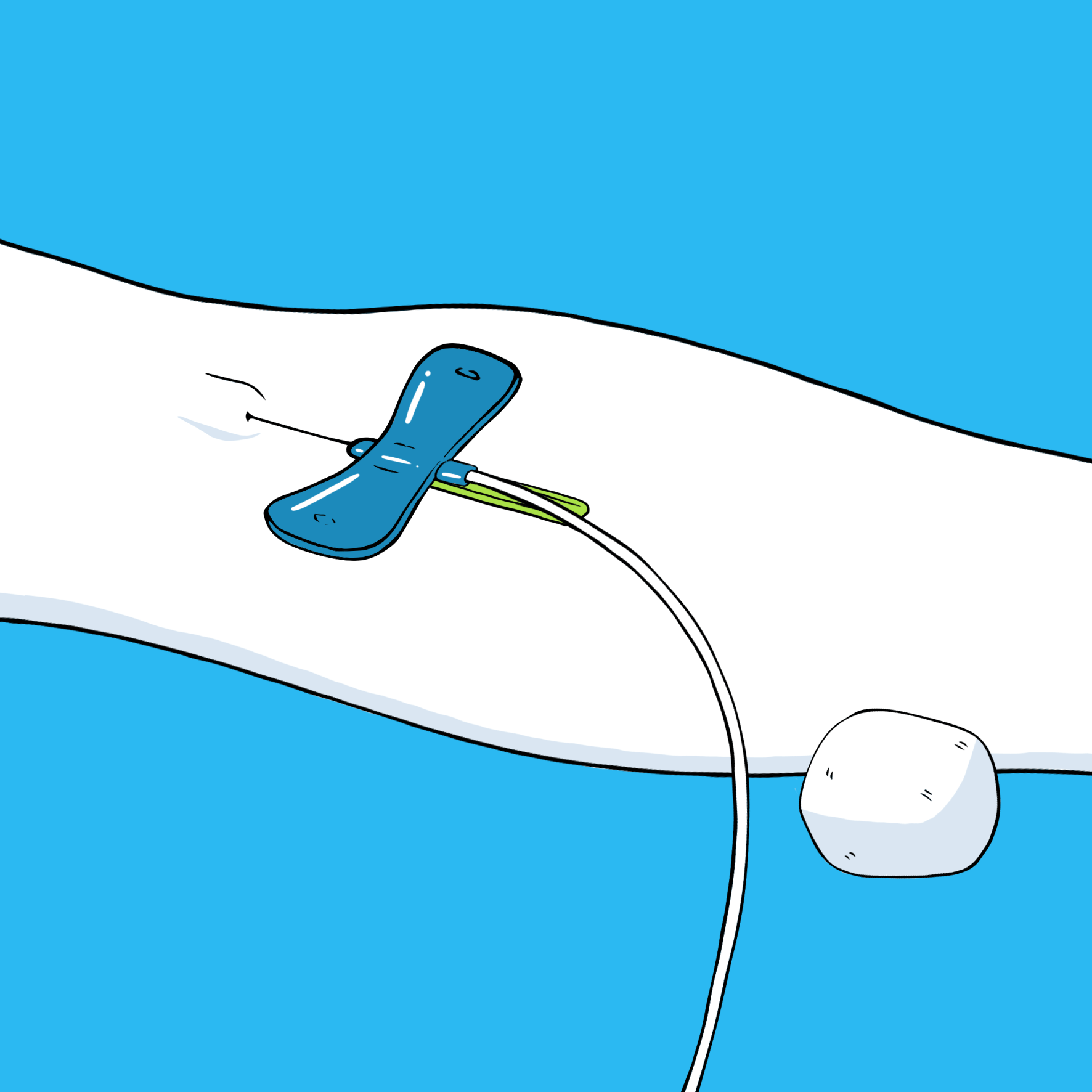

Pinch the butterfly “wings” between your fingers or just hold base of needle and steadily pull the needle back out of the vein the same angle you put it in – put the needle, syringe in the sharps bin and immediately put pressure over the injection site with the cotton wool or gauze – keep pressure on for 5-10 minutes or longer if the site is still bleeding.
Don’t rub with the cotton wool as you can remove the clot that has formed.
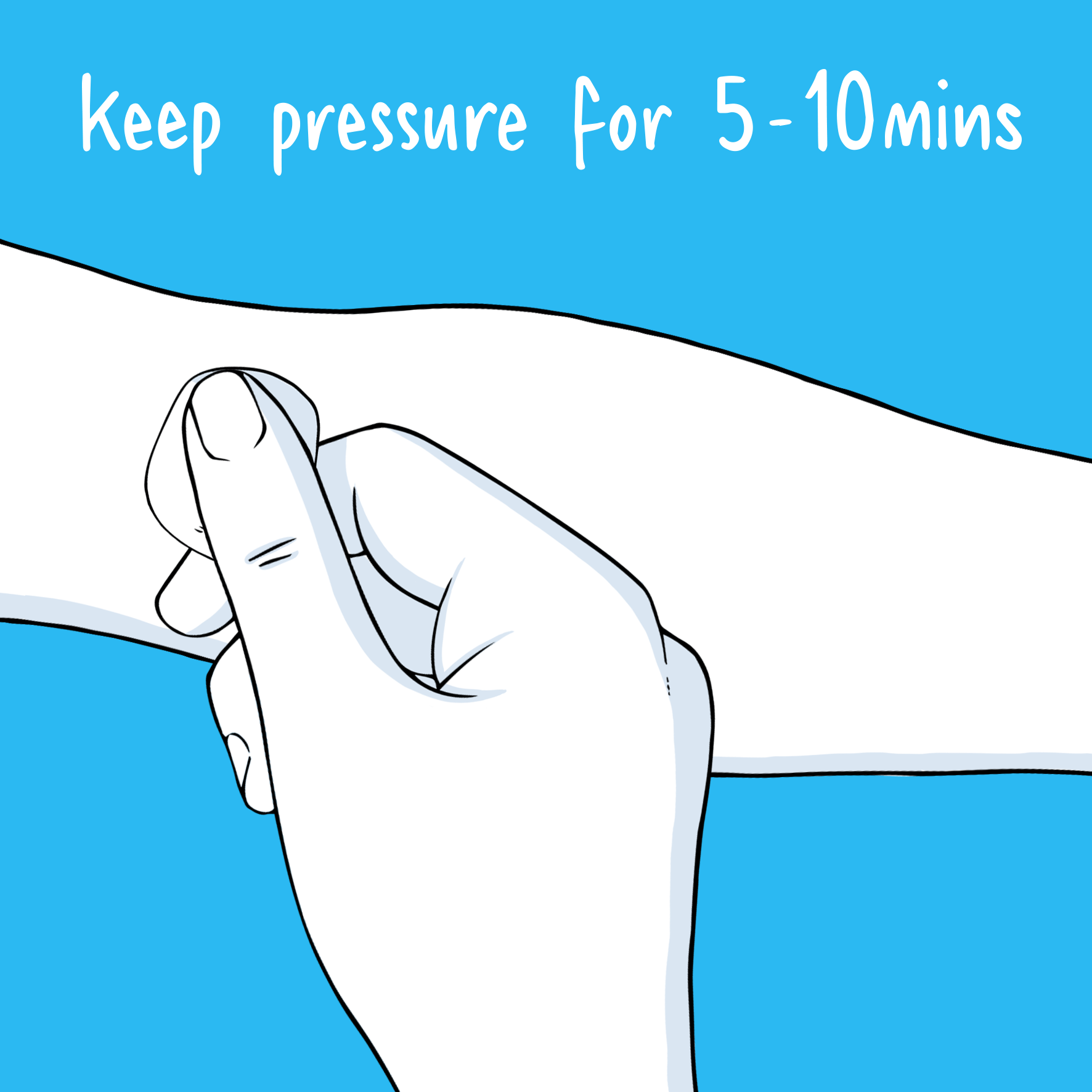


Once the injection site has stopped bleeding you may want to put a plaster on, just in case a little blood leaks out later when you start moving and bending your arm again!
What if ... I miss the vein?
First of all, don’t worry, try not to get upset or angry – yes it can be very frustrating when you miss the vein, but nobody is perfect and a 100% hit rate would be rather impressive! You will miss the vein at times, but this will happen less and less over time – practice really does make you expert/proficient!
First, try to reposition the needle by partially pulling the needle out the vein (not all the way out though) and then sliding it back in at a slightly different angle – if this doesn’t work after 1 or 2 tries don’t keep repositioning as this can risk damaging your veins making it harder to inject next time or leaving a bit of nasty bruise which isn’t nice to inject in to!
Try again – take out the needle you missed with and dispose of it in the sharps bin (don’t re-use the same needle). Keep pressure on the injection site with cotton wool/gauze ball for 5-10 minutes. During this time you can think about what other site/vein you are going to try to infuse next - once you have decided, prep this site just as described previously then give it another go!
“I missed again!”
Again, don't worry, it happens. You can follow the above steps again and give it a try. However, sometimes it might be useful at this point to take a break and come back in 15-30 minutes before you try again. Make yourself a drink, get up and move about, put some music on – anything to help you clear your head a bit! – you can then come back and give it another go. Remember you can ask your mum, dad, carer to help you or call the centre for advice and help.


What if I ... inject some air?
While it isn’t great to inject air bubbles in to your veins, a small amount isn’t going to do much harm so don’t panic if you accidentally inject a little bit. If you are concerned you can give your haemophilia centre a call to check.
Clearing up
No one wants a bunch of used needles and syringes lying around for long! Some people aren’t as good with the sight of blood and needles as haemophiliacs who’ve grown used to it.

Once you are done and have removed the needle, you should put all sharps, syringes and vials into a sharps bin – this will reduce the chance of accidentally pricking yourself or anyone else with a needle afterwards.
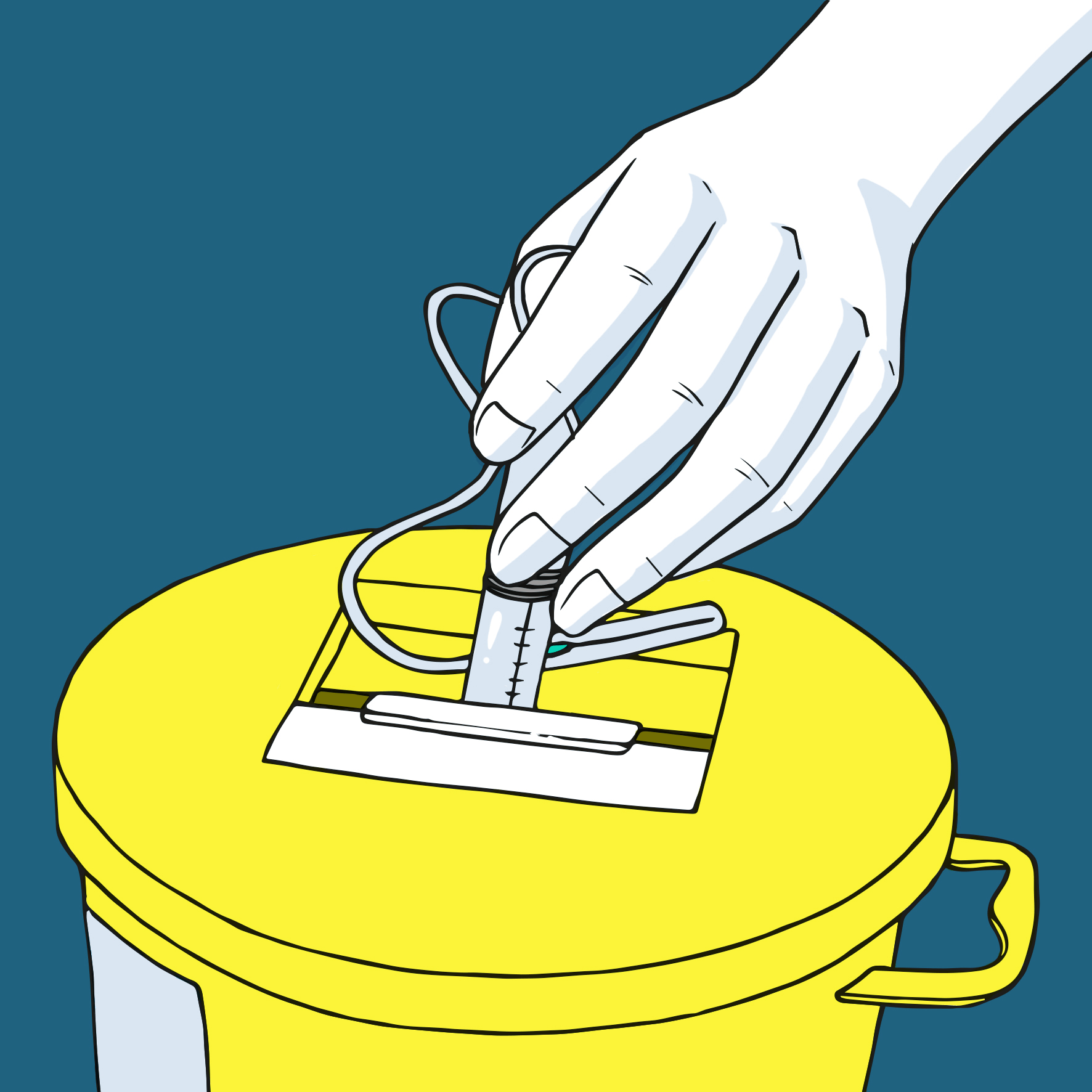
Bits of plastic and cardboard packaging don’t need to go in to the sharps bin – they can be thrown in a normal bin, or better still, be recycled!
Haemtrack time
The best time to fill out your treatment records is just after you have finished your injection. This ensures your records are as accurate as possible.
It‘s really important to track your treatments as this information is very useful for you and your care team during your reviews and to see whether or not your treatment plan might need a bit of tinkering.
And you're done!
Do you have any hints and tips that you think will help others with their infusions? If you do, get in touch with us directly or through your clinical teams, and we can add them to this site.
With thanks to ...
Archie, Daniel, Fay, Gabe, Jack, Keelan, Ralph and Lara from Basingstoke for their help in putting together these pages.